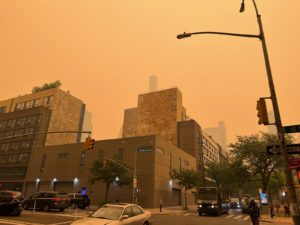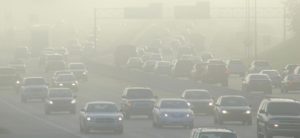 The NY Times recently published a nice article on how our pets are sensitive to the same pollutants in the environment as humans, and can act as early warning systems or sentinels. This is because they respond faster and are more sensitive than humans to many pollutants - whether in the air (air pollution), in household dust, water, or on the ground and lawns.
The NY Times recently published a nice article on how our pets are sensitive to the same pollutants in the environment as humans, and can act as early warning systems or sentinels. This is because they respond faster and are more sensitive than humans to many pollutants - whether in the air (air pollution), in household dust, water, or on the ground and lawns.
Since they live shorter lives than us, negative effects, such as cancers, show up faster in pets than in humans. For example, they get the same cancers as us from lawn pesticides us, but years faster. A recent study found that on days with an increase in air pollution (from fine particulate matter) pet dogs and cats significantly increase veterinary visits.
Do go read the whole article. Excerpts from NY Times: In a Toxic World, Pets Could Be Vital Health Watchdogs
On a frigid February night in 2023, a freight train carrying toxic chemicals derailed in East Palestine, Ohio. For days, the train’s hazardous contents spilled into the surrounding soil, water and air. It was an environmental and public health catastrophe, and efforts are underway to monitor the long-term health effects on the people of East Palestine.
But one team of scientists is focused on a different group of local residents: the dogs. After the derailment, the researchers recruited dog owners in and around East Palestine, asking them to attach chemical-absorbing silicone tags to their pets’ collars. ...continue reading "Our Pets Are Early Warning Systems For Pollutants"






 It has long been known that children living in congested cities have higher rates of asthma. All those vehicles, all that pollution. A recent
It has long been known that children living in congested cities have higher rates of asthma. All those vehicles, all that pollution. A recent 
 Which cities in the US have the worst forms of air pollution? Los Angeles remains the city with the worst ozone pollution in the nation. Fairbanks, Alaska is currently the metropolitan area with the worst short-term particle pollution for the first time. And Bakersfield, California returned as the most polluted for year-round particle pollution (for a second year in a row).
Which cities in the US have the worst forms of air pollution? Los Angeles remains the city with the worst ozone pollution in the nation. Fairbanks, Alaska is currently the metropolitan area with the worst short-term particle pollution for the first time. And Bakersfield, California returned as the most polluted for year-round particle pollution (for a second year in a row). High heat is not good for a developing baby during pregnancy. And neither is air pollution. A just published
High heat is not good for a developing baby during pregnancy. And neither is air pollution. A just published